Are you looking for a way to reduce your environmental impact and take care of your skin at the same time? Look no further! In this article, we’ll show you how to make eco friendly soap. By using natural ingredients and following our step-by-step guide, you can create a soap that is not only gentle on your skin but also kind to the planet. Get ready to embark on a journey towards sustainable self-care!
The Importance of Using Eco Friendly Soap
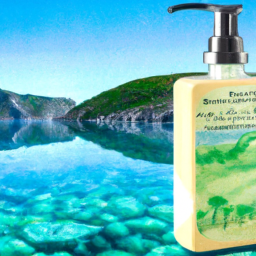
Using eco friendly soap is crucial for reducing our carbon footprint and protecting the environment. When compared to regular soap, eco friendly soap offers several advantages. Firstly, it is made from natural ingredients such as plant oils, which are biodegradable and do not harm aquatic life when they enter water systems. Regular soaps often contain chemicals that can pollute water bodies and pose a threat to marine ecosystems. Secondly, eco friendly soap is free from synthetic fragrances, dyes, and preservatives that can cause skin irritation and allergies in some individuals. By using eco friendly soap, you not only protect your skin but also contribute to reducing water pollution caused by harmful chemical residues. Additionally, eco friendly soaps are often packaged in recyclable materials or come in bar form without any packaging at all, minimizing waste generation and further reducing environmental impact. Making the switch to eco friendly soap is a small yet significant step towards preserving our planet’s resources and ensuring a healthier future for generations to come.
Essential Ingredients for Making Eco Friendly Soap
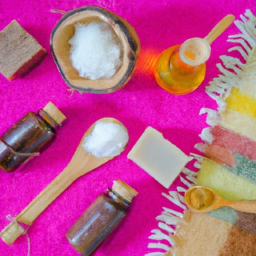
To create your own environmentally conscious soap, you’ll need a few key ingredients. Making eco friendly soap is not only good for the environment, but it’s also a fun and rewarding DIY project. The first ingredient you’ll need is a natural oil or fat such as olive oil, coconut oil, or shea butter. These oils are not only great for moisturizing the skin but also help to create a creamy lather in your soap. Next, you’ll need an alkali solution like sodium hydroxide or potassium hydroxide. This is what will cause the chemical reaction known as saponification, turning the oils into soap. It’s important to handle these chemicals with care and follow safety precautions.
In addition to these basic ingredients, there are many other additives that can enhance the eco friendliness of your soap. For example, using organic herbs and botanicals like lavender buds or chamomile flowers can add fragrance and color to your soap while providing additional skin benefits. You can also incorporate sustainable exfoliants like ground coffee beans or oatmeal for a gentle scrubbing effect.
Overall, making eco friendly soap requires careful selection of ingredients and adherence to sustainable soap making techniques. By choosing natural oils and fats, using organic additives, and being mindful of waste reduction during the process, you can create your own environmentally friendly soaps that are both luxurious and gentle on the planet.
Step-by-Step Guide to Making Eco Friendly Soap
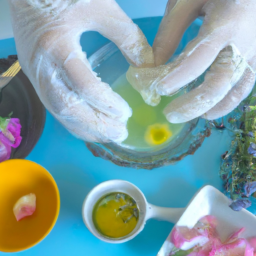
When making environmentally conscious soap, it’s important to carefully follow a step-by-step guide. To start, gather all the necessary ingredients and equipment: oils such as coconut or olive oil, lye, water, essential oils for fragrance, and molds for shaping the soap bars.
Firstly, measure out the correct amounts of oil and lye using a scale. Heat the oils in a pot on low heat until they melt. In another container, mix the lye with water slowly and carefully (remember to wear protective gloves and goggles!). Allow both mixtures to cool down separately.
Once cooled, slowly pour the lye mixture into the pot of melted oil while stirring constantly. This process is called saponification – where lye reacts with oils to create soap. After thorough mixing, add your preferred essential oils for fragrance.
Next comes molding the soap into desired shapes. Pour the mixture into silicone molds or lined cardboard boxes. Let it set for 24 hours before removing from mold.
Lastly, cure your soap by letting it sit undisturbed in a well-ventilated area for about 4-6 weeks. This allows excess water to evaporate and makes your soap harder and longer-lasting.
Remember that there are many eco friendly soap recipe variations available online which you can experiment with using different natural additives like herbs or exfoliants like oatmeal or coffee grounds. Enjoy creating your own customized eco-friendly soaps!
Tips for Packaging and Storing Eco Friendly Soap
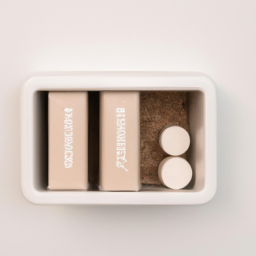
For optimal storage of your eco-friendly soap, be sure to choose packaging that is both sustainable and biodegradable. Eco friendly soap packaging plays a crucial role in maintaining the quality and longevity of your soap while also minimizing its environmental impact. When selecting packaging materials, look for options such as recycled paper or cardboard boxes, glass jars, or even compostable pouches made from plant-based materials.
Proper storage techniques are essential to ensure that your eco-friendly soap remains effective and long-lasting. Keep your soap away from direct sunlight and high temperatures, as these can cause the ingredients to degrade faster. It’s best to store your soap in a cool, dry place like a linen closet or drawer. Avoid storing it in the bathroom where it may be exposed to excess moisture.
To prevent unwanted scent transfers and preserve the natural fragrance of your eco-friendly soap, consider using individual wrapping or keeping each bar in a separate container. This will help maintain its freshness until you’re ready to use it.
Benefits of Using Eco Friendly Soap for Your Skin and the Environment
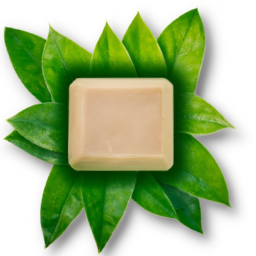
Using eco-friendly soap provides numerous benefits for both your skin and the environment. When it comes to skincare, using products that are gentle and free from harmful chemicals is essential. Eco-friendly soaps are made with sustainable manufacturing practices, ensuring that they have a minimal impact on the environment. These soaps are typically made with natural ingredients such as plant oils and botanical extracts, which are not only beneficial for your skin but also help to reduce pollution caused by conventional soap production.
Eco-friendly soaps are formulated without harsh chemicals like sulfates, parabens, and artificial fragrances. This makes them suitable for all skin types, including sensitive or allergy-prone skin. The natural ingredients in these soaps provide nourishment and hydration to your skin without stripping away its natural oils.
In addition to being good for your skin, using eco-friendly soap is also an environmentally conscious choice. Conventional soap production often involves the use of synthetic ingredients derived from non-renewable resources and can contribute to water pollution through chemical runoff. On the other hand, eco-friendly soaps are biodegradable and do not harm aquatic life when they enter waterways.
Incorporating eco-friendly soap into your skincare routine is a simple yet effective way to make a positive impact on both your health and the environment. By choosing products that prioritize sustainability in their manufacturing process, you can enjoy clean and healthy skin while reducing your carbon footprint.
Frequently Asked Questions
Can I Use Regular Soap Instead of Eco Friendly Soap?
Using regular soap instead of eco friendly soap may not have the same benefits for the environment. Eco friendly soaps are specifically designed to be more sustainable and less harmful to ecosystems. They often use natural ingredients and avoid harsh chemicals that can pollute waterways. By choosing eco friendly soap, you are supporting a more environmentally conscious option that aligns with your desire to reduce your ecological footprint.
Are There Any Potential Side Effects of Using Eco Friendly Soap?
When using eco-friendly soap, it’s important to consider any potential side effects. Some individuals may experience allergies or skin irritations due to the natural ingredients used. However, these reactions are rare and most people find eco-friendly soaps gentle on their skin. Additionally, eco-friendly soaps have a minimal environmental impact as they are made from sustainable resources and don’t contain harmful chemicals that can harm aquatic life or pollute waterways.
Can I Use Essential Oils for Fragrance in Eco Friendly Soap?
Yes, you can absolutely use essential oils for fragrance in your eco friendly soap. Essential oils are a natural and sustainable alternative to synthetic fragrances. They not only provide a pleasant scent but also offer various therapeutic benefits. When making DIY eco friendly soap, incorporating essential oils allows you to create unique and personalized blends using natural ingredients. Just be sure to research the specific properties and safe usage guidelines of each essential oil before including them in your soap recipe.
How Long Does Eco Friendly Soap Last Before It Expires?
The shelf life of eco friendly soap can vary depending on the ingredients used and how it is stored. Properly stored, most eco friendly soaps can last for about one to two years. To ensure its longevity, store your soap in a cool, dry place away from direct sunlight and excessive humidity. Avoid keeping it in the shower where it may become wet and mushy. Following these storage recommendations will help extend the lifespan of your eco friendly soap.
Can I Sell Eco Friendly Soap That I Make at Home?
Yes, you can sell eco-friendly soap that you make at home. However, there are some legal requirements you need to consider. Before selling homemade soap, it’s important to check with your local government for any regulations or permits needed. You may also need to comply with labeling requirements and ensure that your product meets safety standards. It’s always a good idea to research and understand the legal obligations involved in selling homemade products to avoid any issues down the line.
Conclusion
In conclusion, making eco-friendly soap is not only beneficial for your skin but also for the environment. By using natural ingredients and avoiding harmful chemicals, you can create a soap that is gentle on your skin and free from pollutants. The step-by-step guide provided in this article offers an easy way to make your own eco-friendly soap at home. Remember to package and store it properly to maintain its quality. By choosing eco-friendly soap, you are taking a small yet significant step towards a greener and healthier lifestyle.